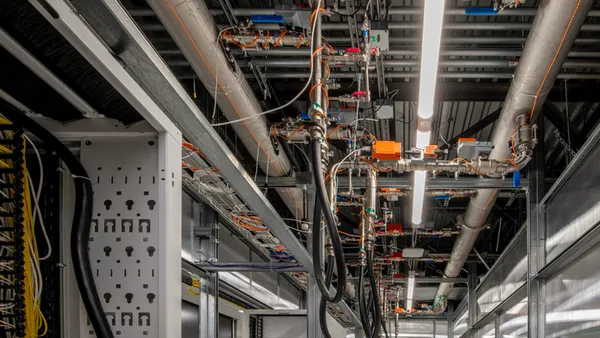The age of mostly assigned desks in office environments has waned, with the percentage of companies opting for assigned seating declining from 83% to 55% in 2024, according to CBRE workplace project benchmarking data.
In contrast, hybrid and desk-sharing models are gaining acceptance, increasing from 12% to 36%, reflecting a growing preference for flexibility and activity-based work environments, the firm says in a March 25 report on effective spaces as part of a series on global workplace and occupancy insights.
However, a significant disconnect between organizational perceptions of workplace strategy and the reality of their office spaces still exists, CBRE says. Many organizations are clinging to outdated models and failing to prioritize activity-based and collaborative environments that are crucial for a hybrid workforce, the firm says.
Higher density
The employee-to-seat ratio has been rising sharply since 2021, and now more than 60% of organizations report having a target sharing ratio at or above 1.5 employees per desk, CBRE says – and the amount of individual spaces has decreased from 51% in 2021 to 40% in 2024.
Workstations between 35 and 49 square feet have become the standard, now constituting 64% of workspaces. This contrasts with a decrease in larger private offices, which declined in popularity from 16% to just 4%, “indicating a significant realignment in space utilization and leadership preferences,” CBRE says.
As organizations work to increase the amount of collaboration and teamwork-oriented spaces, the office has also “begun a renaissance, fueled by a surge in employee engagement, networking and socialization,” CBRE says, noting “we are witnessing the emergence of vibrant, modern workspaces.”
Despite the decline of individual offices and increased importance of open, collaborative spaces, employees still prefer to meet in enclosed spaces, with enclosed meeting room use more than double that of open areas, says CBRE, citing data from the XY Sense Q2 2024 Workplace Utilization Index. This is likely due to employee desire for visual and audio privacy, with use of private focus areas 21% higher than open workstations, “reflecting a growing need for quiet zones in the office,” CBRE says.
“In the overall open-office world, quiet spaces are not something we have done generally very well,” Alana Dunoff, strategic facility planning consultant and adjunct professor at Temple University, said while speaking at IFMA’s World Workplace conference in October. “We like [closed spaces] to take a phone call, to just think for a minute.”
Amenities highlight wellness and community needs
Amenities aimed at transforming the workplace into an experience represent a fundamental shift in how work and community are perceived, according to the report. These amenities include town hall spaces with bleachers for dynamic gatherings and health-focused areas like quiet rooms, library-like zones and lactation facilities.
“While the overall increase in amenity space allocation remains modest — up a mere 6 percentage points from 11% in 2021 to 17% in 2024 — this shift toward experiential spaces supports attraction and retention of an increasingly hybrid workforce,” CBRE says.
Full-service restaurants and cafes are the most common workplace amenity, reported by 55% of respondents to CBRE’s 2024 benchmarking survey, followed by free parking at 24%. Wellness spaces, multi-purpose space and lactation rooms were also in the top five amenities at about 15%, respectively.
By prioritizing employee well-being through things like ergonomic furniture, noise-reduction strategies and flexible work arrangements, organizations can create a healthier, happier and more productive workforce, CBRE says.
Co-working space has also become an “essential tool” for companies aiming to support growth and contraction strategies, mitigate uncertainty and accommodate a distributed workforce, CBRE says. More than 40% of companies with medium-sized portfolios between 3 and 12 million square feet are planning to either increase or maintain their use of flex office space, contrasting the 17% of larger portfolios over 12 million square feet that plan to decrease their current use of flex office space use, according to the report.















